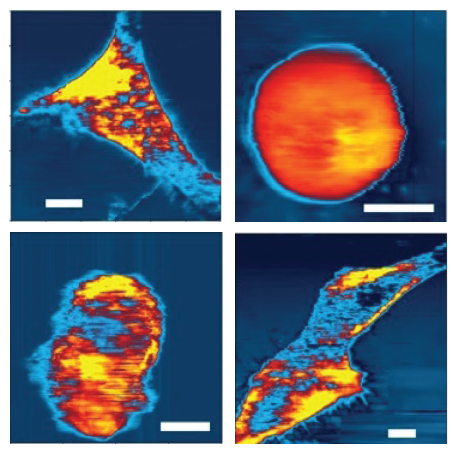Mapping of Living Cells

The fragility and gelatinous consistency of living cells pose a major challenge for researchers when pursuing accurate measurements of cellular properties to understand the mechanics of living matters. However, experimental physicist Prof Penger Tong has solved the longstanding obstacle with his collaborators, by engineering a new type of atomic force microscope (AFM) probe with a long needle that allows the AFM operate in air and only the needle tip is in contact with liquid.
The breakthrough lies in the creation of a contactless method of mapping the mechanical properties such as viscoelasticity of living cells, while allowing their integrity and activities to remain undisturbed. Harnessing the newly engineered AFM probe, they measured the mechanical properties of the immortalized cell line “HeLa cells”, with faculty members from the Division of Life Science. Comparisons were made to assess whether the cells were healthy or diseased, or if they had distinct functions, which led to the discovery of new knowledge related to the roles played by the cells’ volumetric and elastic properties.
This groundbreaking achievement paves the way for uncovering the mechanobiological differences between healthy and cancerous cells. And in its next venture, the team would like to explore the differences between living and dead cells, an endeavor that would propel them to another frontier of science—the point where life and death meet.
Prof Penger Tong is Associate Provost (Mainland Affairs), Chair Professor of the Department of Physics and Fellow of the American Physical Society. Besides soft matter physics, his research interests also include biophysics as well as complex and disordered systems.